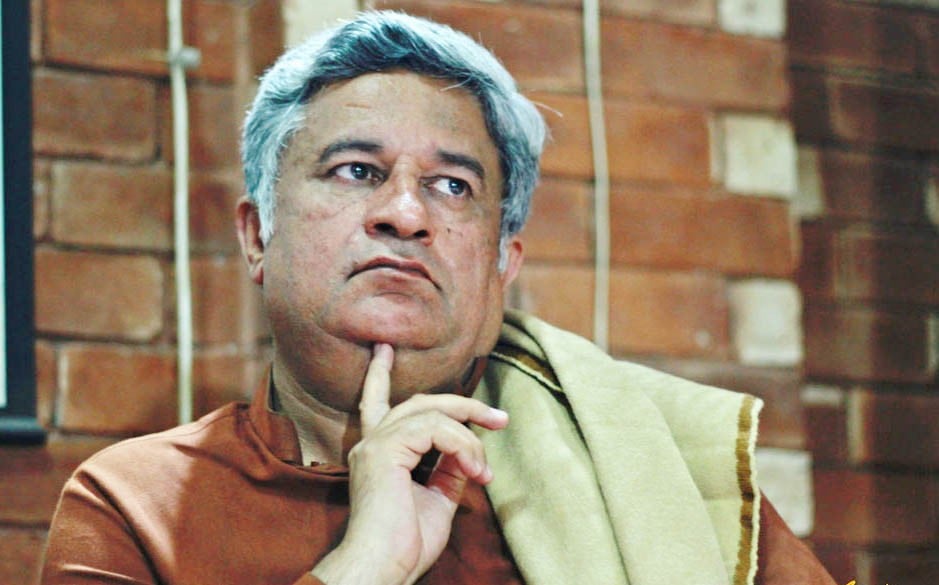
A unique volume of recognisable stories of people who were not at peace throughout their lives, because creative nonfiction is almost nonexistent in contemporary Punjabi writing

Writing in the Punjabi language is a political act: it shows solidarity with unofficial parts of life. Writing literary fiction that involves marginalised identities and characters and sexualities is also an act of solidarity with the underrepresented parts of life. Writing creative nonfiction, or literary journalism, in Punjabi is like choosing to be triply removed from all possibilities of mainstream recognition. This is what Nain Sukh has done in his latest collection of short stories and it is a choice that requires an extraordinary degree of commitment. Moreover, he has to do this with his own resources, without the support of any official body that exists to support literature at national or provincial level.
In this volume, Nain Sukh has written stories of people who were not at peace throughout their lives. The stories are easily recognisable and verifiable if the reader is willing to go through the documented and undocumented sources. This makes the work unique because creative nonfiction is almost nonexistent in contemporary Punjabi writing even though it is an ever-growing genre in Anglophone literary circles. Truman Capote, with his novel In Cold Blood, made the genre respectable in the 1960s and it exploded afterwards. In Urdu and Punjabi, this combination of imagination and factual writing is almost nonexistent except perhaps in travelogues of a certain literary flair.
As if this permanent affiliation with the margins were not enough, Nain Sukh has chosen outsiders as his subject matter as well: I.D.Shahbaz DD (Imam Din Shahbaz, Honorary Doctor of Divinity), Maulana Ubaidullah Sindhi, Dada Amir Haider Khan, Agha Khan Sahotra, Aliya Begum Aziz, and Nasreen Anjum Bhatti. All of these real life people make wonderful characters in the stories.
The story of I.D. Shahbaz, who translated the Psalms into Punjabi verses that could be sung on Indian ragas, is the story of a subaltern trying to align himself with colonial and neocolonial masters. The story is also about the famine of 1900-1901 and how it produced a great number of orphan children who were converted to Christianity because of the influence of British missionaries and mercenaries. Despite all this, the Pslams had to be sung in local ragas to have a mass appeal.
Homi K. Bhabha has also discussed the arrival of Christianity in India in his article "Signs Taken for Wonders" in The Location of Culture but this piece of literary reportage exposes the pain of the structurally imposed hybridity and the condition of the subaltern in India in an altogether new manner. The excerpts of the letters of the British are also painful. "You chuhras are not classed as agriculturists," says the British government to those landless subalterns who ask for some land after conversion. This is the beauty of this new genre: the documentary and oral sources are part of the narrative.
The pinnacle of Nain Sukh’s mastery over the craft of this new genre is to be witnessed in the story of Dada Amir Haider. The story of this famous founding member of the Communist Party of India begins from a small village called Kalian Sihalian (former name Sihali Umar Khan) in Rawalpindi District. In Nain Sukh’s portrayal, Amir Haider always seeks an escape from oppression wherever he encounters it, be it from a "stepfather, sardar, lambardar, patwari, maulvi, pir, pandit, or a moneylender". In his attempts to escape unfavourable conditions, Amir Haider reaches Peshawar, Calcutta, Bombay, New York and then Moscow where he attends Communist University of the Toilers of the East and listens to the lectures of Lenin. In New York and in Moscow, he experiences love but in Moscow love is combined with revolutionary ideals.
The story of Amir Haider’s several names also unfolds as his life spans several continents. He is Dada Amir Haider in Bombay, Tony in New York, Comrade Sukharoff in Moscow. Nain Sukh has not relied only on the published memoirs but also interviewed the relatives and the inhabitants of the village where Dada Amir Haider grew up and lived his final days.
These stories and the characters are also proofs (or witnesses) of a time when it was possible to travel by train from Peshawar to Bombay, when it was possible for women to live in working women’s hostels and work for Pakistan Radio and nurture revolutionary ideals.
The stories of sapphic love affairs, of survival strategies of Rana Zubair, of Pak Tea House, of Bhutto’s passionate followers, of subalterns trying to gain respect by any means available even by converting to Christianity, and tales of characters spending intimate hours with Munir Niazi, speak of a time when local metaphysics was not at the service of capitalism, when the likes of Amir Liaquat and Junaid Jamshed did not rule the airwaves, when it was possible to mix the sacral with revolutionary eschatology and sing "Hum Daikhain Gay". Now we are all living in this flat world where one superpower makes everybody equally intolerant. I wish someone equally at home in Punjabi and English translated Nain Sukh’s work into English and repairs the image of our past, present, and future in the world.